Suffering from knee pain or instability? An ACL tear, one of the most common knee injuries, could be the culprit. Understanding ACL tears—their signs, causes, and your path to recovery—is essential. This article provides concise, easy-to-understand information on ACL tears to aid in your diagnosis and decision-making for treatment. Get the facts quickly and start your journey to recovery with confidence.
Key Takeaways
- ACL tears frequently occur in sports with sudden directional changes and are more common in women due to biomechanical differences, with a significant number of tears being non-contact injuries.
- Diagnosis of ACL tears involves physical exams and an MRI to confirm injury severity, while treatment options range from non-surgical methods like rest and physical therapy to surgical reconstruction based on injury severity and patient needs.
- Preventing ACL injuries is essential and can be achieved through training and proper equipment, while sports medicine provides critical care for diagnosis, treatment, and safe return to sports post-ACL injury.
Understanding ACL Tears: Causes and Risk Factors
Active individuals and athletes often suffer from injuries to the anterior cruciate ligament (ACL), including damage to its associated structures such as the medial collateral ligament and lateral collateral ligament. High-impact sports, like basketball, football, soccer, and skiing, tend to report more incidents of ACL tears. Every year in the United States alone, it’s estimated that between 100,000 and 200,000 cases arise, which may necessitate a surgical procedure known as anterior cruciate ligament reconstruction. Notably too is that women are at a greater risk of sustaining an ACL injury compared to men due primarily to differences in biomechanics.
Common Causes
Most ACL tears happen during sports characterized by abrupt halts and directional shifts. The classic scenario leading to an ACL tear involves a sharp twisting motion, with the feet fixed in place while the knees pivot in another direction. This type of serious injury is frequently seen in sports like:
- soccer
- basketball
- skiing
- football
Such athletic endeavors that require quick pivots or leaping movements are often associated with this form of significant damage.
Risk Factors
Several elements can increase the likelihood of sustaining an ACL injury. Women are known to have a much greater chance of experiencing these injuries than men, especially in sports that require actions such as cutting, pivoting, and leaping. Anatomical characteristics like having increased genu valgum or knock-knees could also boost the risk for ACL injuries. Engaging in contact sports tends to raise the probability of suffering from ACL injuries due to associated movements like turning and valgus stress or hyperextension often resulting from physical collisions.
Intriguingly, around 70% of all cases involving torn ACLs occur without direct contact. Instead, they happen when deceleration is paired with twisting motion. Focusing on only one sport early in life may lead to more frequent occurrences of this type because intense practice schedules along with inadequate rest periods contribute toward muscular imbalances which might undermine knee stability thereby raising chances for an ACL injury. The risk is Elevated by certain physical factors including narrower notch widths at the knee joint and increased tibial slopes that make individuals more prone to these types of injuries. Beyond athletic activity, there is also an athletic activity. Notably, strong impacts such as those experienced during vehicular accidents can result in similar trauma affecting the anterior cruciate ligament (ACL).
Identifying an ACL Tear: Symptoms and Diagnosis
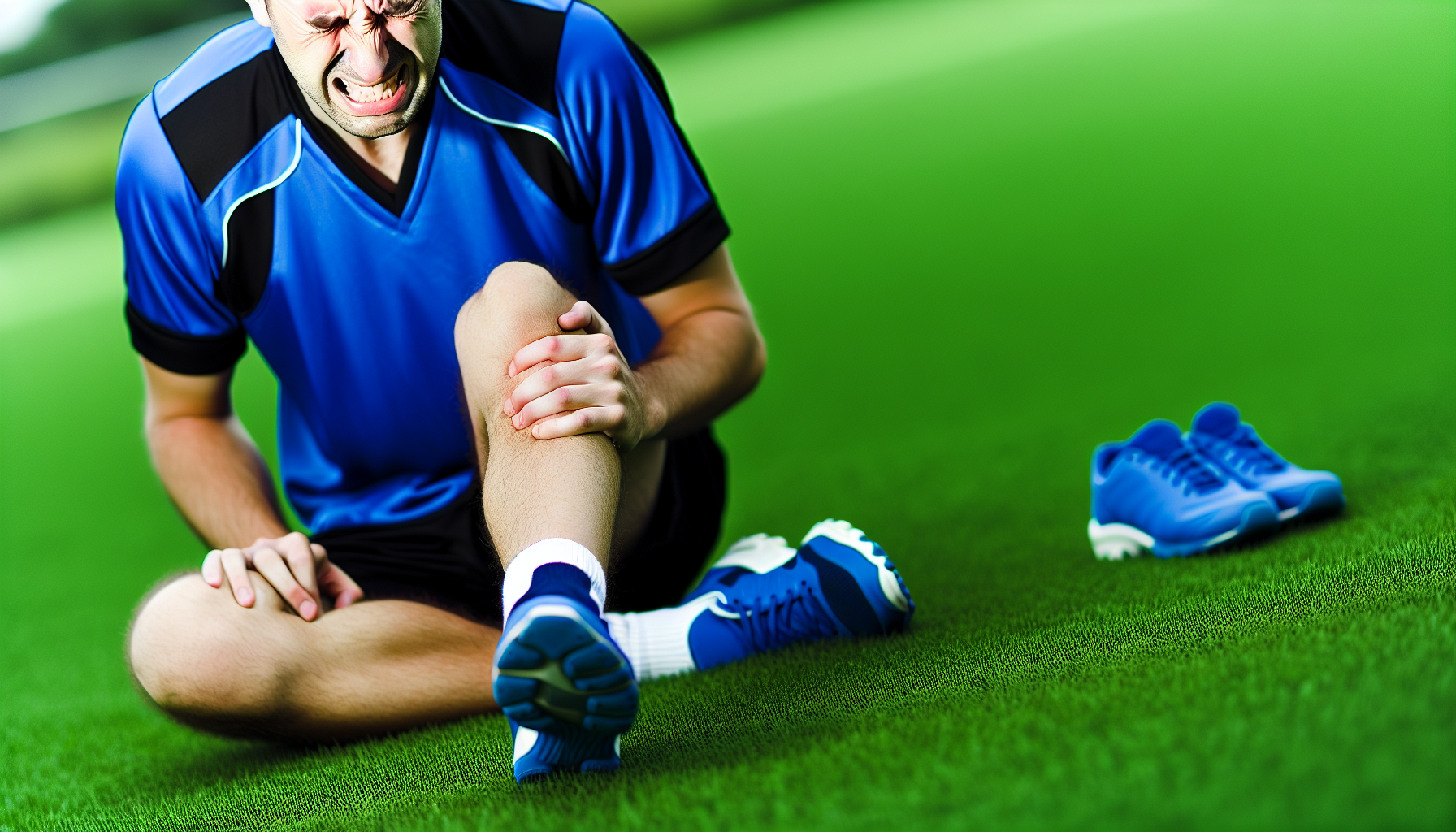
Early detection of a complete ACL tear is crucial for prompt treatment and effective recovery. Symptoms signaling an ACL injury typically involve hearing a distinct popping noise, experiencing swelling within the knee joint, and feeling instability while placing weight on the leg in question. Physicians initially perform a physical examination to evaluate these symptoms and then utilize MRI scans to verify the presence of a torn ACL.
ACL injuries are categorized based on severity using a grading system that spans from grade one, indicating minimal severity, to grade three, which represents the most severe form of injury.
Symptoms
A typical sign of an ACL injury is a notable ‘popping’ sound or sensation within the knee. Immediately after such an injury, intense pain typically ensues along with a loss of ability to carry on with physical activities. Swelling around the knee tends to develop swiftly following an ACL tear, and there’s also often a diminished range of motion in the affected knee joint.
Experiencing instability in the knee or having it feel like it might collapse (‘giving way’) when bearing weight could indicate that an individual has sustained an ACL tear.
Diagnosis Process
Upon recognizing the signs, medical professionals embark on an in-depth diagnostic journey. They begin with physical assessments like the Lachman test and pivot-shift test to gauge ACL integrity and knee stability effectively. Sports medicine experts, including orthopedic surgeons, carry out comprehensive evaluations that may incorporate early motion exercises in conjunction with other physical tests. X-rays are typically administered to rule out bone fractures that could potentially occur alongside an ACL tear.
As for precision in diagnosis, MRI stands as the definitive tool for verifying an ACL tear while also providing intricate details about the severity of the injury. For sports medicine physicians tasked with determining a suitable course of action—be it surgical intervention or conservative therapy—an accurate diagnosis is imperative.
Non-Surgical Treatment Options for ACL Tears
Surgical intervention isn’t always required for ACL tears. The injury’s extent and the person’s lifestyle often determine whether alternatives such as:
- Resting
- Taking medication
- Using braces
- Engaging in physical therapy
are appropriate options to pursue. Rehabilitation from an ACL tear without surgery is heavily dependent on physical therapy, which focuses on recovering the knee’s function, strength, and stability.
It should be acknowledged that non-surgical approaches have their constraints when addressing serious ACL injuries, especially in individuals who are highly active athletically.
Rest and Medication
In the case of minor ACL tears, taking prompt actions such as icing the knee, raising it above the level of the heart, and utilizing compression bandages or wraps can aid in the early recovery stages. It is commonly recommended to engage in little to no physical activity for several weeks post-ACL injury, providing time for tissue restoration.
To alleviate swelling and expedite healing from an ACL injury, anti-inflammatory drugs such as ibuprofen may be beneficial.
Bracing and Physical Therapy
For some individuals suffering from ACL injuries, healthcare providers may suggest the use of a brace as an element of early treatment. The function of this brace is to offer support to the knee joint while restricting its movement, which serves to protect the injured ACL from additional harm.
To bracing, physical therapy is vital in managing ACL injuries without resorting to surgery. Physical therapists collaborate with patients on creating personalized regimes designed to regain knee functionality and enhance both muscle strength and joint stability.
Disadvantages and Limitations
Choosing non-surgical interventions for ACL tears presents certain restrictions. The absence of a functioning ACL can lead to reduced knee stability, hindering participation in sports and activities that require intense landing, cutting, and pivoting motions. It is impossible to definitively determine which individuals with ACL injuries will manage to resume high-impact sports or physical activity without surgery. Thus the outcome of these treatments remains uncertain.
When opting for conservative treatment approaches for an injured ACL, continual strength training becomes essential alongside adjustments in lifestyle or athletic pursuits aimed at preventing additional injury while preserving knee function. For those less active or engaged in low-impact sports activities, physical therapy emerges as a particularly viable option for managing and rehabilitating an ACL injury.
Surgical Approaches to ACL Tears: Types and Techniques
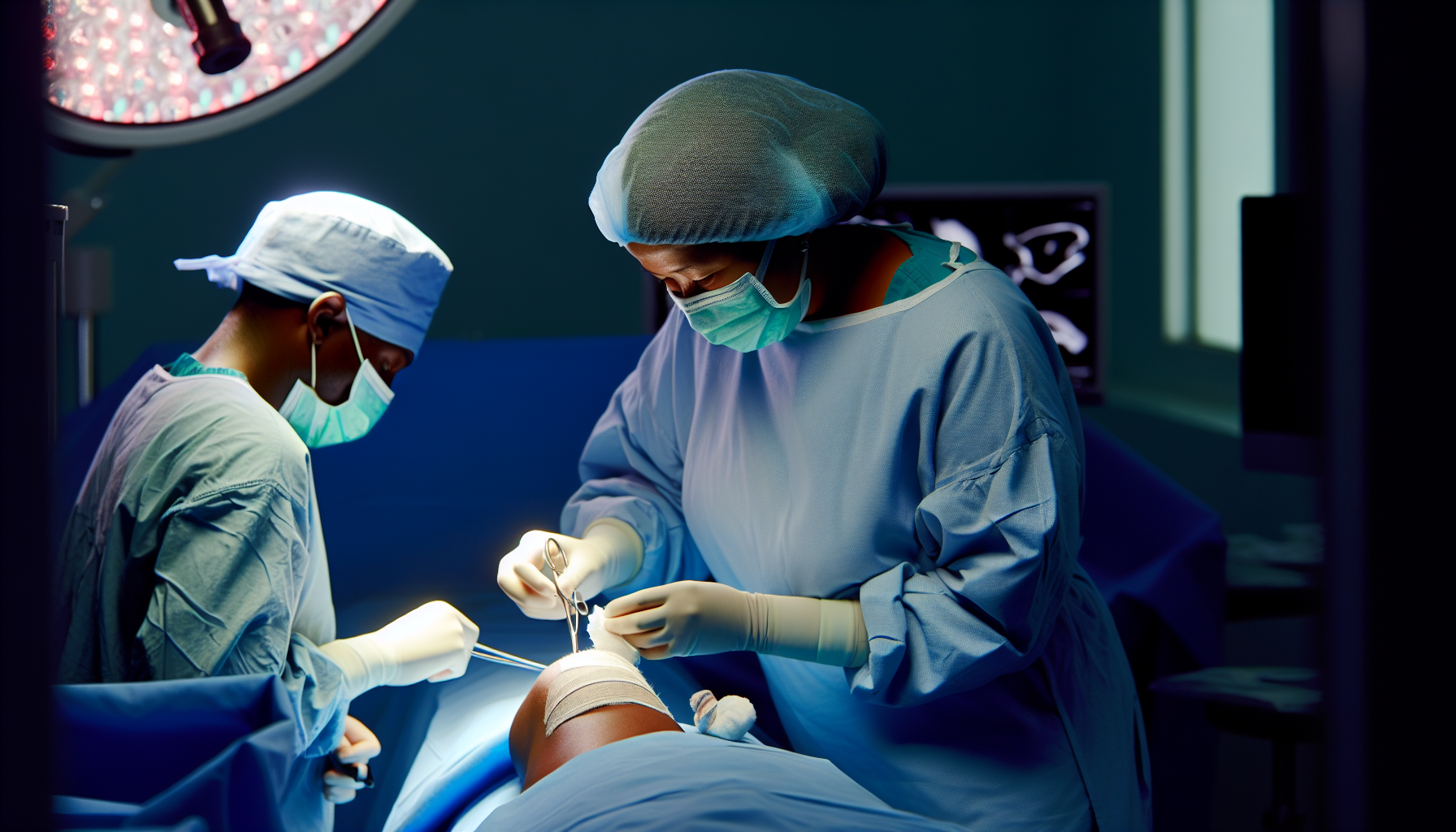
In cases of significant ACL tears or for those who plan to engage in high-level physical activities, surgery might be required. Various surgical options exist depending on the extent of the injury and the patient’s age, including procedures such as ACL reconstruction, transphyseal reconstruction, and physeal-sparing surgery.
ACL Reconstruction
Surgery for ACL reconstruction is undertaken to substitute a torn ACL with a graft made from tissue. This replacement tissue can be taken from:
- the hamstring of the patient
- their quadriceps tendon
- their patellar tendon, or
- an allograft may also serve as an option.
Employing arthroscopic methods involving miniature incisions and fiber optics, this surgery is conducted in a way that minimizes invasiveness.
It should be recognized that there was an earlier method called ACL repair where suturing of the torn ligament occurred. Due to its high incidence of failure, it has been mostly abandoned in favor of reconstructive techniques using grafts.
Transphyseal Reconstruction
For adolescents typically within the age range of 13 to about 16 or 17 years old, transphyseal ACL reconstruction is often the method of choice due to its proven effectiveness for this particular demographic. The procedure involves arthroscopic assistance and entails rebuilding the torn ACL with a soft-tissue graft that’s threaded through tunnels created within the knee joint. Special care is taken during surgery to reduce any harm to growth plates—especially steering clear of damaging the femoral physis—to avoid potential complications related to uneven leg growth or angular deformities in leg structure.
When carrying out an ACL reconstruction, it’s common practice to utilize grafts obtained from either hamstring or quadriceps tendons associated with the thigh bone belonging to patients themselves.
Physeal-Sparing Surgery
In cases of ACL injuries among young individuals who have not reached puberty, the surgical intervention that is favored spares the growth plates—known as physeal-sparing surgery. This method has been carefully crafted to circumvent harm to these crucial areas to prevent compromising future bone development. A specific technique by Anderson employed during this procedure entails constructing channels exclusively within the epiphyseal region and utilizing a hamstring autograft for ACL reconstruction without inflicting damage on the growth plates.
Despite its advantages, such an approach does carry certain risks. Among these are potential adverse effects on the physes—the possibility that alterations might occur there—as well as heightened susceptibility of grafts failing due to increased strain and complications resulting from scar tissue formation that may impede joint flexibility.
Post-Surgery Recovery and Rehabilitation

A multifaceted team is essential in the recovery from an ACL tear, encompassing professionals like:
- A knee specialist focused on orthopedic surgery
- Expert physical therapists
- Trained athletic coaches
- Professionals adept at strength and conditioning exercises
The collective expertise of a sports medicine group tackles every aspect of an athlete’s recuperation journey, focusing on both their psychological and physiological restoration.
Post-surgery recuperation leverages diverse instruments and methodologies including Continuous passive motion (CPM) machines along with rigorous physical therapy to support the healing path.
CPM Devices
The utilization of Continuous Passive Motion (CPM) devices greatly enhances the rehabilitation process following surgery. By employing these machines, patients can achieve improved mobility in their joints due to several key functions.
- Passively flexing and extending the knee joint
- Maintaining continuous movement of the joint
- Inhibiting stiffness in the knee, which is a typical issue post-operatively
- Hindering the development of scar tissue that could impede motion.
These devices come equipped with motorized components that facilitate joint movement at a consistent velocity and within a set range of motion, thereby supporting recuperation efforts.
Physical Therapy
Recovery from treatment, regardless of whether it is a surgical or non-surgical approach, is largely dependent on the rigorous implementation of physical therapy. After undergoing ACL surgery, patients can expect to begin their physical therapy anywhere from two weeks up to several months post-operation. The primary goals of this therapeutic process are bolstering muscle strength around the knee and enhancing flexibility through an increased range of motion. This involves engaging in a series of exercises such as:
- Lying down hip extensions
- Seated towel stretches for calf muscles
- Flat-back hamstring stretching
- Quadriceps contractions
- Heel slide movements
These specific activities are designed to restore muscular power, ensure joint stability, and re-establish limb agility.
To these exercises, physical therapy provides psychological support aimed at overcoming mental hurdles associated with recovery while also conducting functional assessments that determine when an individual may be fit enough to resume athletic activities safely.
Follow-Up Appointments
Post-operative check-ins following ACL surgery are essential to track healing progress, evaluate the success of treatments, and address any arising issues. These check-ins typically happen at set times post-surgery.
- Between one to two weeks for removing stitches and assessing wound recovery
- At four to six weeks
- At three to four months
- At six months
- And at the one-year mark
At these sessions, an examination of knee movement, power, and stability is conducted. The objectives for rehabilitation are continuously updated to restore the complete functionality of the knee and get it ready for whatever physical pursuits the patient wishes to engage in while making necessary modifications.
Typically within a window of six to nine months after undergoing ACL surgery, patients can expect a return to sports-related activities—this though hinges on successfully passing certain evaluations relating to muscle strength plus both agility as well coordination tests that form part of personalized return-to-play protocols established jointly by their surgeon along with both their physical therapist and athletic trainer.
Preventing ACL Injuries: Training and Equipment

Grasping the factors that lead to ACL injuries and how they are treated is just as vital as taking steps to prevent them. Year-long commitment to training, involving both strength-building and flexibility exercises, plays a key role in enhancing balance and coordination — important aspects for minimizing the likelihood of suffering from ACL injuries.
Incorporating appropriate warm-up routines before participating in competitive sports activities is crucial for sidestepping muscle strains along with preventing potential ACL injuries. A recommended warm-up regimen could include:
- Exercises tailored specifically for your sport
- Techniques focused on safe landing practices
- Drills aimed at improving agility
- Squats
- Lunges
- Planks
By regularly performing these kinds of physical activities, you can fortify your lower body muscles and core stability while also sharpening your balance capabilities—all integral strategies designed to lessen the chances of experiencing an ACL injury.
Training and Exercise
Programs designed to strengthen the quadriceps, hamstrings, and core may bolster stability and provide a defense against serious knee injuries such as ACL injuries. Athletes participating in sports with abrupt directional shifts, slowing down abruptly, or jumping—such as skiing, basketball, soccer volleyball and football—can lessen their risk of knee injuries by mastering proper techniques for landing and engaging in agility training drills. Key exercises that are beneficial include:
- Squats
- Lunges
- Step-ups
- Deadlifts
- Leg presses
- Hamstring curls
Planks Russian twists.
Incorporating these types of movements into exercise regimens is instrumental in fortifying the muscles surrounding the knee joint which can contribute to minimizing the potential for ACL injuries.
Tailored neuromuscular balance exercises specific to athletes’ needs like those found within SPORTSMETRICS program specifically aimed at female athletes have been shown effective in decreasing both first-time occurrences and repeat incidences of severe ailment issues associated with realm knees.
Gear Selection
Appropriate attire can serve as a safeguard against ACL injuries. Shoes tailored for specific sports are crafted to support the distinct motions associated with each activity, thereby reducing the risk of knee-related issues such as tears in the ACL. Shoes that enhance stability offer correction for excessive inward rolling of the foot known as overpronation and subsequently protect your knees.
It is crucial to periodically evaluate your athletic footwear since alterations in body weight, aging processes, and varying sports activities may necessitate unique forms of cushioning and support essential for preserving both knee integrity and shin bone health.
The Role of Sports Medicine in ACL Injury Management
Orthopaedic surgeons and sports medicine specialists provide indispensable services in recognizing, managing, and treating injuries to the ACL. Their expertise is specifically tailored towards addressing these types of athletic injuries.
Diagnosis and Treatment
Experts in sports medicine advise on the appropriate surgical interventions considering aspects such as the extent of injury, the age of the patient, and their level of bone maturity. They collaborate with coaches and athletic trainers to customize rehabilitation protocols, training regimens, and competitive timelines that mitigate the risk of Injury post an ACL tear.
For example, surgery for reconstructing a torn ACL is highly successful and serves to safeguard the knee against the potential onset of osteoarthritis.
Safe Return to Sports
Sports medicine focuses not only on the treatment of sports-related injuries but also emphasizes the importance of a safe re-entry into athletic activities. Experts in this field develop personalized rehabilitation plans that are crucial for athletes to heal completely and make a secure comeback to their respective sports.
Nevertheless, there can be situations where an initial ACL surgery doesn’t yield the desired results, leading to the need for revision surgery. Typically, these instances experience increased rates of failure and diminished prospects for successfully resuming participation in sports activities.
Summary
Grasping the intricacies of ACL injuries—including the reasons behind them, their signs, and treatment approaches—is vital for those engaged in athletics or who lead an active lifestyle. Rehabilitation may involve conservative methods or surgical intervention but invariably incorporates a comprehensive strategy that encompasses physical therapy and consistent check-ups. Just as essential as addressing these injuries is preventing them through proper training, exercise routines, and appropriate equipment use. Sports medicine plays an irreplaceable role in diagnosing ACL conditions, administering treatment plans, and managing recovery protocols to facilitate a triumphant comeback to athletic activities. Contact Plancher Orthopaedics to see how we can help you with your ACL tear!
Frequently Asked Questions
Can a torn ACL heal without surgery?
Yes, a torn ACL may heal with therapy instead of surgery, as recent research suggests nonsurgical treatment could be as effective.
Consider discussing this option with your doctor.
Can you still walk with a torn ACL?
Certainly, walking is possible with a torn ACL. This can lead to discomfort and may restrict your ability to execute abrupt twists or pivots. While wearing a brace might offer some stability for the knee, surgical intervention is typically required for repairing ACL tears.
What happens when an ACL tears?
Upon tearing an ACL, a person might feel their knee pop and subsequently deal with swelling and lack of stability that can cause pain and trouble while attempting to walk.
It is essential for someone who has sustained this type of injury to get medical care promptly.
How long does a ACL tear take to heal?
Recovery from a torn ACL typically spans between six to nine months, although athletes competing at higher levels may require somewhat more time. Guidance on when to resume physical activities will be provided by your healthcare provider.
How are ACL tears diagnosed?
Physicians typically begin the diagnosis process for a suspected torn ACL with an evaluative physical examination to identify symptoms. Subsequently, they utilize MRI imaging as a definitive method for confirming the presence of the injury.
Employing this methodology is regarded as conventional practice in diagnosing a torn ACL.




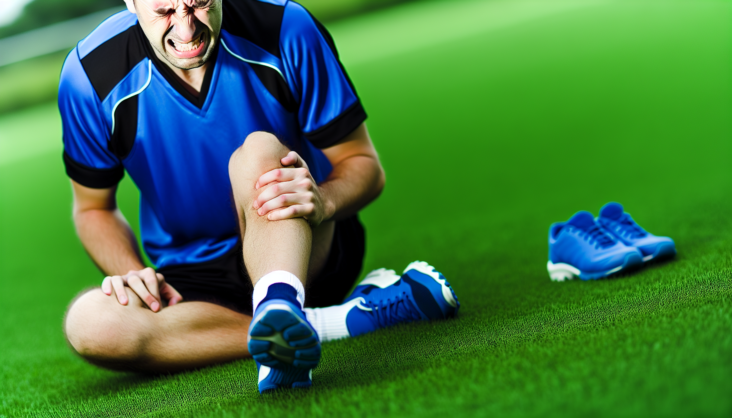
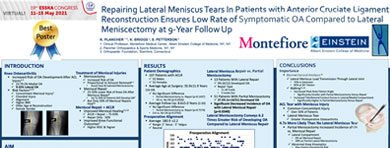
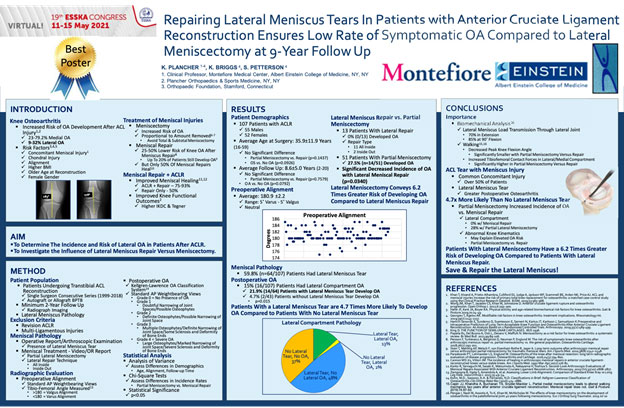
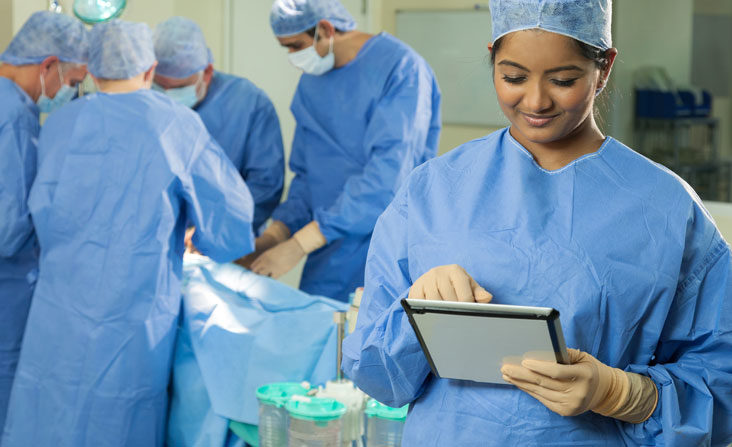
 William D. Murrell, MD
William D. Murrell, MD Thomas B. Evely, DO
Thomas B. Evely, DO Clifford Voigt, MD
Clifford Voigt, MD Karthikeyan Chinnakkannu, MD
Karthikeyan Chinnakkannu, MD Max N. Seiter, MD
Max N. Seiter, MD Demetris Delos, MD
Demetris Delos, MD Lauren M. Fabian, MD
Lauren M. Fabian, MD